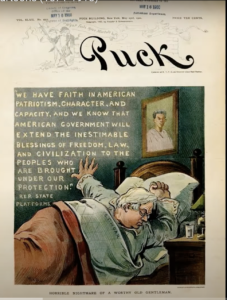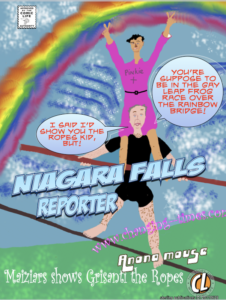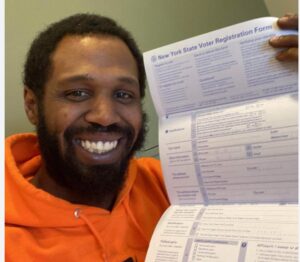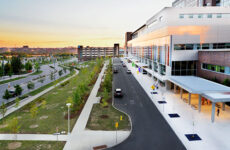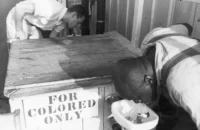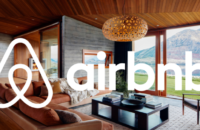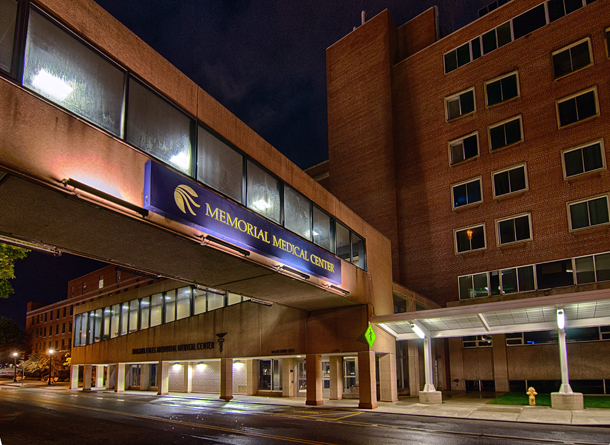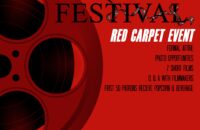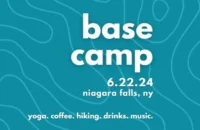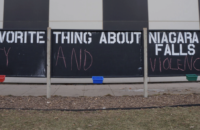By Gerald Skrlin
In response to Frank Parlato’s question, “What will it take to fix up the Falls?” I found myself reflecting on the challenges our beloved city faces.
Indeed, it feels like a centipede asked which foot it put forth first when walking – where do we even begin?
The city of Niagara Falls, both geographically and figuratively, is in dire straits. The task of identifying the causes of our current predicament is as daunting as brainstorming solutions. Yet, amid this complex web of issues, I believe the way forward is simpler than we might think.
According to logical thought, solutions to difficult problems often consist of clear steps – what, where, when, and how to implement movement. Most importantly, these steps should involve the ‘people’ element in collective decision-making.
This idea is echoed in the Jewish Scriptures, where a proverb states, “In the multitude of counsellors there lacketh not wisdom!”
This is democracy in its purest form, a system of social organization that thrives on collective wisdom. But when centralization is introduced, as suggested by Mayor Restaino, democratic influence becomes diluted.
Indeed, the task of revitalizing the downtown core tourist zone in Niagara Falls, New York, is daunting. We are aware that individuals are interested in acquiring prime real estate through deals with the City and NYS entity USA Niagara.
This entity’s leadership, for the most part, includes figures like DelMonte, Rizzio, Todaro, and others who are entrenched in the multi-year sub-government movement in Niagara.
This sub-government has now reached NYS levels, as noted in Mayor Restaino’s communications before he was elected, where he encouraged ‘centralization’ among City, County, and New York State agencies. As we move forward, we must ensure that the collective voice of the people is not lost amid the corridors of power.
Revitalizing Niagara Falls requires a collective effort, a democratic process that involves each citizen in decision-making. We must harness the wisdom found in our multitude of counselors and navigate our way out of these dire straits. Together, we can bring about a new era of development in Niagara Falls, one that truly benefits its residents and visitors alike.
The concept of centralization warrants a closer look. It implies that somewhere along the timeline, one person becomes the top dog. However, we must remember that while there are altruistic individuals who care about the outcome, it’s also a dog-eat-dog world.
So, what does it take to change things? What will it take to revitalize Niagara Falls?
Any significant change requires consensus. Most people must agree on the direction of change. This simple logic, however, seems to contradict our current political reality. It’s become all too clear that once certain individuals are elected, they abandon their promises and follow their own agendas.
This situation brings to mind an when a politician reneged on his promises. When Grizanti ran on an anti-gay platform, only to bow to Governor Coumo’s presence during a private meeting in his office, he demonstrated a disregard for the promises made to the electorate.
The lesson here is clear: promises made during election campaigns must be upheld. Our elected officials must be held accountable for their actions and decisions.
In a democratic society, it is better to have a “five on one” approach. Government moves slowly, and people need to be convinced of what’s right. We all stand in respect at official ceremonies during prayers and pledges, but when it comes to political debates, self-interest often takes precedence.
This self-interest, taken to the extreme, has led to our current predicament: a city downtrodden, with a political body paralyzed by an inability or refusal to cooperate.
President Woodrow Wilson once stated that a collective agreement was good if no one walked away completely satisfied. This implies everyone gained a partial victory, and no one received more than they deserved.
However, when business interests supersede public interest in decision-making, such as emergency council meetings for quick payments to preferred contractors, it becomes a burden. Our current political leadership believes their actions are justified, even when they know they’re operating in legal gray areas or against public sentiment.
So, what will it take to fix up the Falls?
As Ralph Nader, the world-renowned advocate for car and tobacco safety, stated, political change occurs through the active inclusion of large numbers of people.
Nader suggested that just 2% of the population could trigger significant change. Interestingly, it’s also 2% of the national population lives in extreme destitution that’s causing the current street and gun violence in the USA.
Two percent of the voting population in Niagara is roughly equivalent to the number of people organized by Demetreus Nix, which seems to have unsettled Mayor Robert Restaino.
To revitalize the Falls, we need to observe the reality that exists and identify elected public decision-makers who prioritize public good over personal agendas.
Despite a Presbyterian preacher’s 1837 prediction that Niagara Falls would be graced with a high-end hotel, no such establishment has attracted people. Instead, personalities like Wallenda, following in the steps of Spelterini, Blondin, and Trotter, have drawn crowds.
So, should we consider revitalizing First Street to accommodate Wallenda, who has expressed interest in coming to Niagara Falls? He even criticized Niagara’s leadership for thwarting his attempts to establish a Wallenda Show.
Who can think of such innovative ideas to unite the community? Perhaps Mr. Nix, who has actively encouraged his neighborhoods to improve their lives.
It’s almost humorous how Mayor Restaino, a fellow Democrat, has reacted to Demetreus. Rather than chastising him, Restaino should be commending his efforts to engage the lower class in voting.
But as more lower-class voters exercise their rights, some politicians might be in for a surprise. Voters will choose those who not only promise, but also act on those promises to improve their lives.
In Niagara, what will it take to bring about this change?
We can look to examples of success in other areas for inspiration.
Consider Darien, a township in the Southern tier that has implemented a tax relief system benefiting its citizens, using the licensing revenues from Six Flags amusement park.
Similarly, Buffalo and the Tonawandas, like Lewiston, have thrived due to their active art councils and paid activist leadership. The Allentown and Lewiston Art Festivals draw people from thousands of miles away, contributing significantly to local economies and cultural vibrancy.
In contrast, we’ve seen a shift in Niagara Falls, New York, where power is concentrated among political families.
The phrase “Power to the People” seems to have lost its meaning, as these families cooperate to promote their own interests, not those of the community.
To fix the Falls, the first step is to usher in greater democratic participation. We need to reject the nepotism and old power structures that our current elected leaders embrace. The focus should be on serving the people, not maintaining the status quo for the benefit of a select few.
We need to encourage meaningful civic engagement, promote transparency in governance, and ensure accountability of our leaders. Only then can we hope to see a revitalized Niagara Falls that serves its residents and attracts visitors from near and far.
So, let’s bring back “Power to the People.”
Let’s work together to create a Niagara Falls that we can all be proud of. It’s time for change, and it starts with us.


